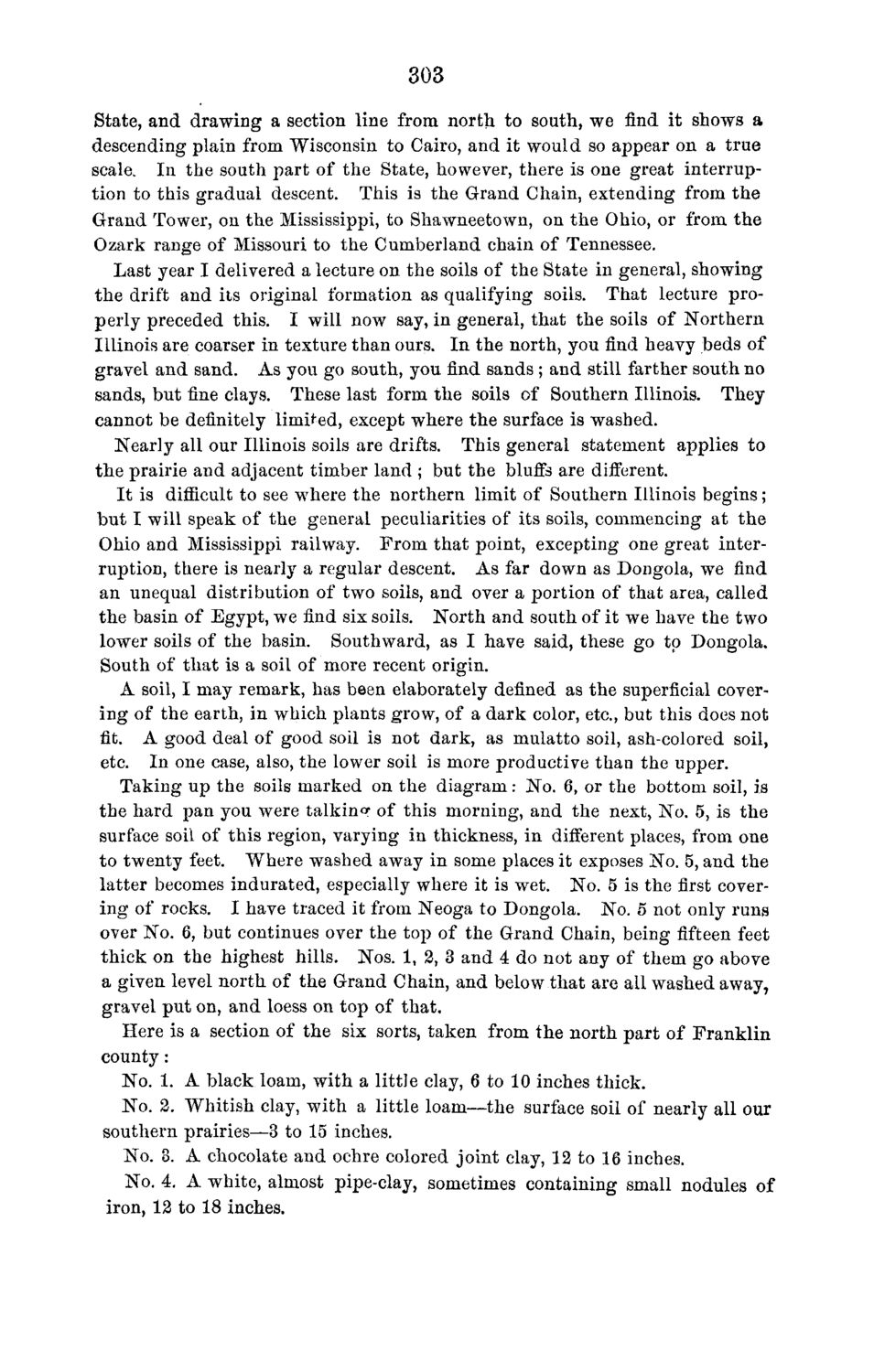| |
| |
Caption: Board of Trustees Minutes - 1870
This is a reduced-resolution page image for fast online browsing.

EXTRACTED TEXT FROM PAGE:
303 State, and drawing a section line from north to south, we find it shows a descending plain from Wisconsin to Cairo, and it would so appear on a true scale. In the south part of the State, however, there is one great interruption to this gradual descent. This is the Grand Chain, extending from t h e Grand Tower, on the Mississippi, to Shawneetown, on t h e Ohio, or from t h e Ozark range of Missouri to the Cumberland chain of Tennessee. Last year I delivered a lecture on the soils of the State in general, showing the drift and its original formation as qualifying soils. That lecture properly preceded this. I will now say, in general, that the soils of Northern Illinois are coarser in texture than ours. I n the north, you find heavy beds of gravel and sand. As you go south, you find sands ; and still farther south no sands, but fine clays. These last form the soils of Southern Illinois. They cannot be definitely limited, except where the surface is washed. Nearly all our Illinois soils are drifts. This general statement applies to t h e prairie and adjacent timber land ; but the bluffs are different. I t is difficult to see where the northern limit of Southern Illinois begins; b u t I will speak of the general peculiarities of its soils, commencing at t h e Ohio and Mississippi railway. From that point, excepting one great interruption, there is nearly a regular descent. As far down as Dongola, we find an unequal distribution of two soils, and over a portion of that area, called the basin of Egypt, we find six soils. N o r t h and south of it we have the two lower soils of the basin. Southward, as I have said, these go to Dongola. South of t h a t is a soil of more recent origin. A soil, I may remark, has been elaborately defined as the superficial covering of the earth, in which plants grow, of a dark color, etc., but this does not fit. A good deal of good soil is not dark, as mulatto soil, ash-colored soil, etc. In one case, also, the lower soil is more productive than the upper. Taking up the soils marked on the diagram: No. 6, or the bottom soil, is the hard pan you were t a l k i n g of this morning, and the next, No. 5, is t h e surface soil of this region, varying in thickness, in different places, from one to twenty feet. Where washed away in some places it exposes No. 5, and the latter becomes indurated, especially where it is wet. No. 5 is the first covering of rocks. I have traced it from Neoga to Dongola. No. 5 not only runs over No. 6, but continues over the top of the Grand Chain, being fifteen feet thick on the highest hills. Nos. 1, 2, 3 and 4 do not any of them go above a given level north of the Grand Chain, and below that are all washed away, gravel put on, and loess on top of that. Here is a section of the six sorts, taken from the north part of F r a n k l i n county: No. 1. A black loam, with a little clay, 6 to 10 inches thick. No. 2. Whitish clay, with a little loam—the surface soil of nearly all our southern prairies—3 to 15 inches. No. 8. A chocolate and ochre colored joint clay, 12 to 16 inches. No. 4. A white, almost pipe-clay, sometimes containing small nodules of iron, 12 to 18 inches.
| |